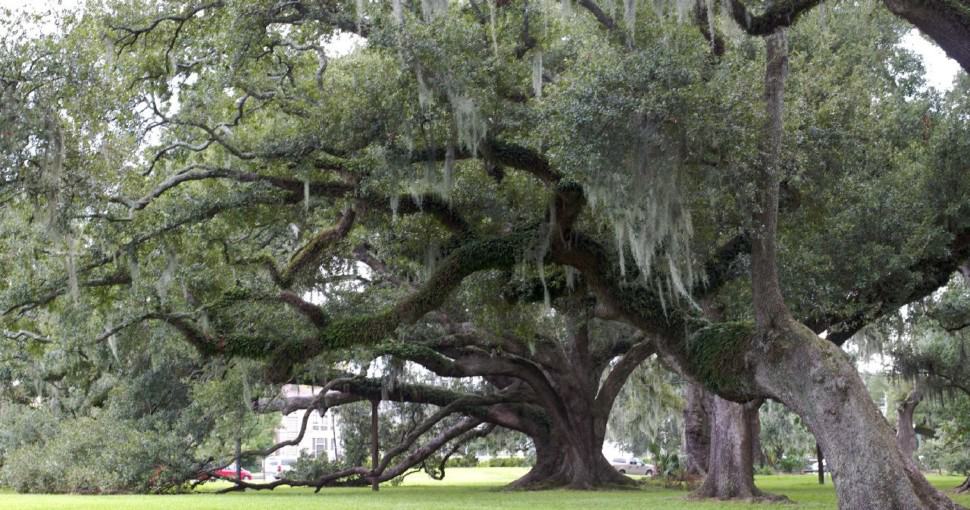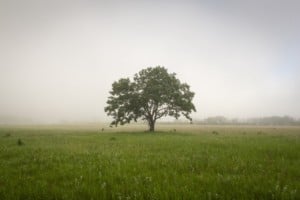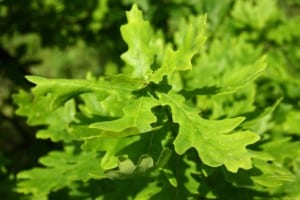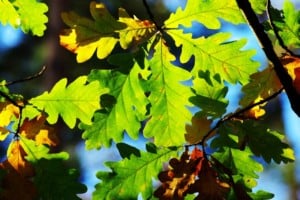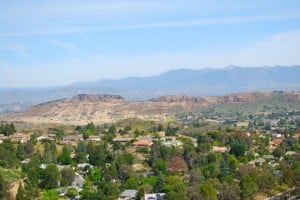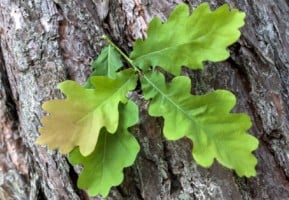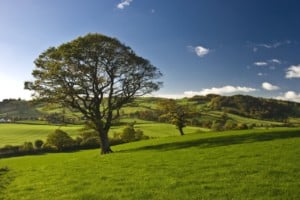Do you wish to grow Oak Trees in your home garden? Well, you will be pleased to know that Mississippi has no shortage of Oak Trees growing on its lands because of the ideal soil and weather conditions. Read on to discover the best Oak Trees that you can grow in your Mississippi home garden!
Contents
- 1. Post Oak (Quercus Stellata)
- 2. White Oak (Quercus Alba)
- 3. Swamp Chestnut Oak (Quercus Michauxii)
- 4. Southern Red Oak (Quercus Falcate)
- 5. Cherrybark Oak (Quercus Pagoda)
- 6. Black Oak (Quercus Velutina)
- 7. Shumard Oak (Quercus Shumardii)
- 8. Blackjack Oak (Quercus Marilandcia)
- 9. Water Oak (Quercus Nigra)
- 10. Scarlet Oak (Quercus Coccinea)
- 11. Bluff Oak (Quercus Austrina)
- 12. Swamp White Oak (Quercus Bicolor)
- 13. Durand Oak (Quercus Durandii)
- 14. Sand Live Oak (Quercus Geminata)
- 15. Laurel Oak (Quercus Laurifolia)
- 16. Bluejack Oak (Quercus Incana)
- 17. Turkey Oak (Quercus Laevis)
- 18. Overcup Oak (Quercus Lyrata)
- 19. Sand Post Oak (Quercus Margaretta)
- 20. Dwarf Live Oak (Quercus Minima)
- 21. Chinkapin Oak (Quercus Muhlenbergii)
There are more than 600 species of Oak Trees in the world. Oaks are part of the Quercus genus. These are deciduous and evergreen tree species. They are incredibly durable and can live for more than 200 years. Oak Trees are known for bearing rounded to oval-shaped acorns with scaly, sometimes hairy top cups.
Mississippi is blessed with a wide array of native and naturalized Oak Trees, including the Post Oak, White Oak, Dwarf Live Oak, Laurel Oak, Black Oak, Swamp Chestnut Oak, and more. These trees feature attractive leaves, distinctive barks, and wildlife-attracting acorns. They also have large ridged foliage that displays varying fall colors.
Most Oak Trees are quite popularly used in the timber industry because of their durable wood. It’s used to produce furniture, tools, flooring, wagons, ships, drums, and more. The wood can also be split to make durable heavy baskets. Many people also use it to produce wine and whiskey barrels. The acorns produced by Oaks are an outstanding food source for wildlife, including deer, squirrels, turkey, woodpeckers, rodents, geese, and even cows.
These trees need about 6 hours of direct sunlight to thrive. Thanks to the long, hot summers of Mississippi, you will not have any trouble finding a sunlit location for your Oak Tree. You also need to plant them in moist, free-draining soils for prolific leaf growth and acorn production. However, you will have to wait at least 25 to 30 years for a prolific crop of acorns.
Here are the most popular types of Oak Trees grow in Mississippi:
1. Post Oak (Quercus Stellata)
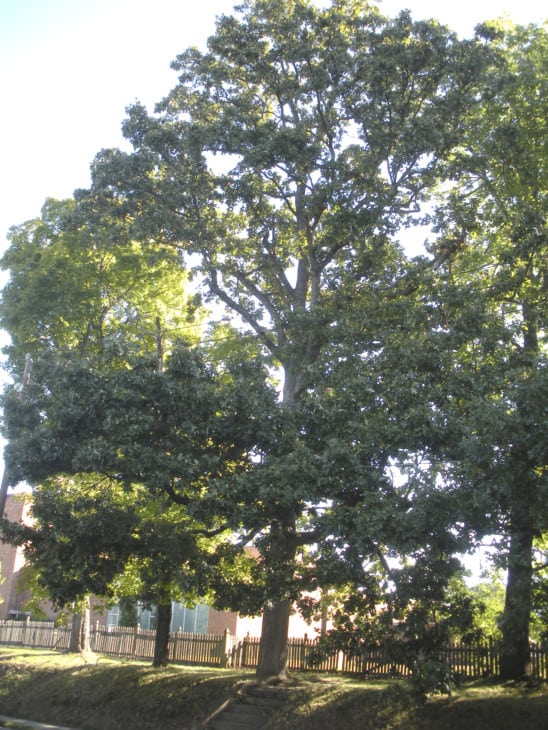
Post Oak is a 35 to 50 feet tall, deciduous tree with a rounded crown, durable wood, and rough, leathery, lobed, dark green leaves that turn yellow and brown in fall. It produces insignificant yellow-green spring blooms that give way to oval acorns with bowl-shaped cups. Post Oak thrives in acidic, moist, rich, well-drained soils and full sun.
2. White Oak (Quercus Alba)
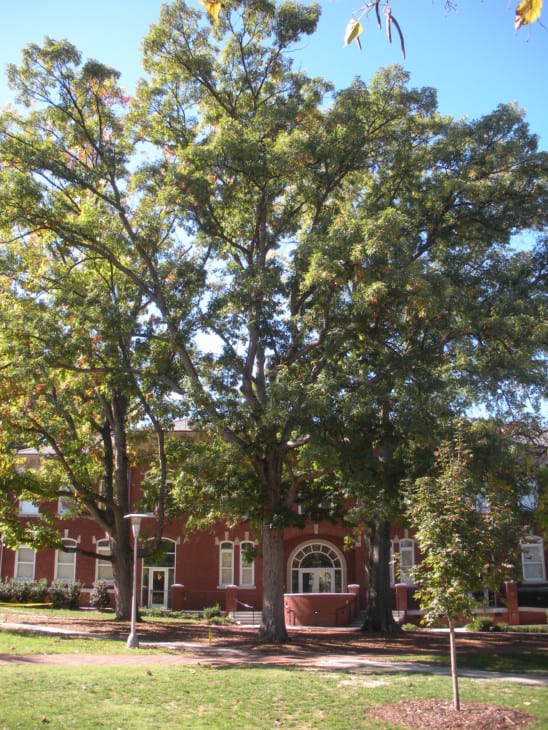
White Oak is a large, 50 to 80 feet tall, wide-spreading, deciduous tree with a rounded or pyramidal crown. It produces greenish-yellow spring flowers and oval acorns with wart-scaled cups. This tree features lobed, dark green foliage that turns dark red and brown in fall. White Oaks grow well in sunlit areas in rich, well-drained, acidic, moist soils.
3. Swamp Chestnut Oak (Quercus Michauxii)
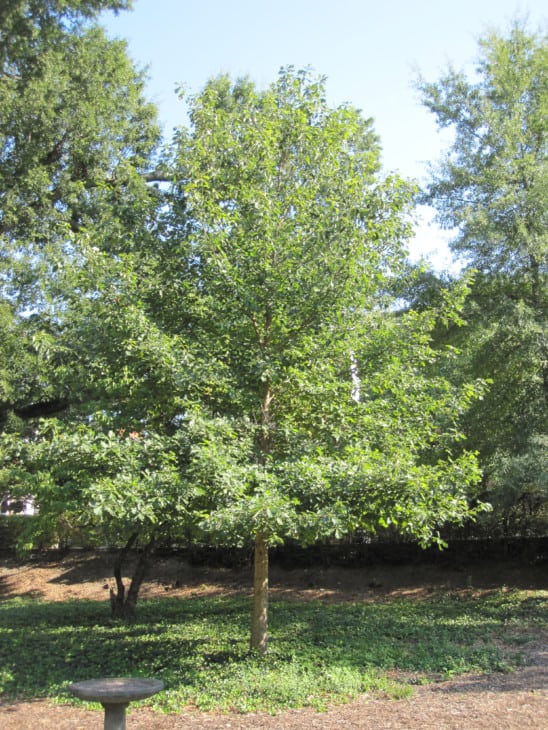
Swamp Chestnut Oak is a 40 to 60 feet tall, deciduous tree with a narrow, tight, rounded crown. It features obovate, shiny green leaves with wavy margins, grayish, hairy undersides, and large, rounded teeth. It has wonderful dark red fall foliage. This tree produces insignificant blooms that are followed by acorns with hairy, grayish-brown scaly-cupped acorns. Swamp Chestnut Oak thrives in sun-kissed locations in acidic, moist, well-drained loams.
4. Southern Red Oak (Quercus Falcate)
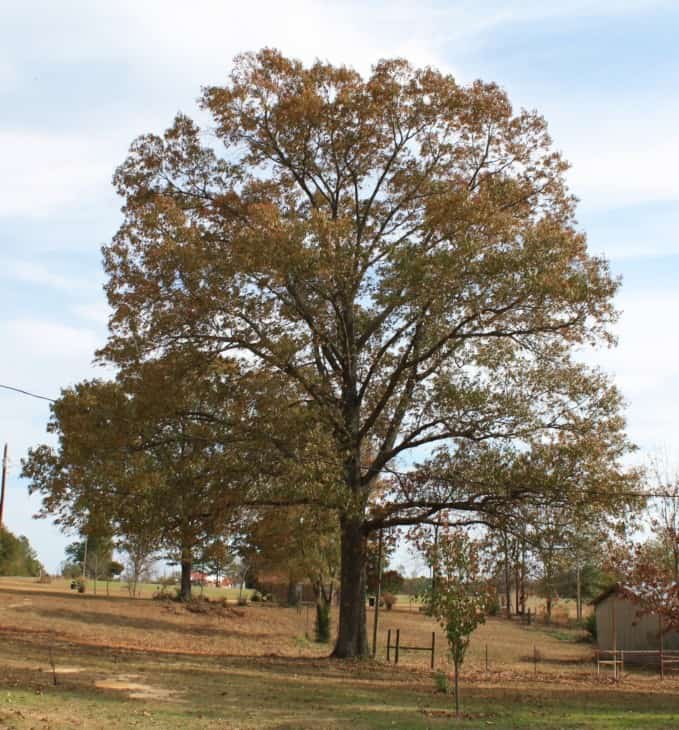
Southern Red Oak is a 60 to 80 feet tall, deciduous tree with a straight trunk and an open rounded crown. It has long, obovate to broad-oval, lobed, rounded, dark green leaves with pale green undersides. The foliage turns insignificant reddish-brown in fall. This tree also grows small blooms that give way to small, globular acorns. Southern Red Oak thrives in sunlit areas in acidic, well-drained, and dry to medium loams and sandy soils.
5. Cherrybark Oak (Quercus Pagoda)
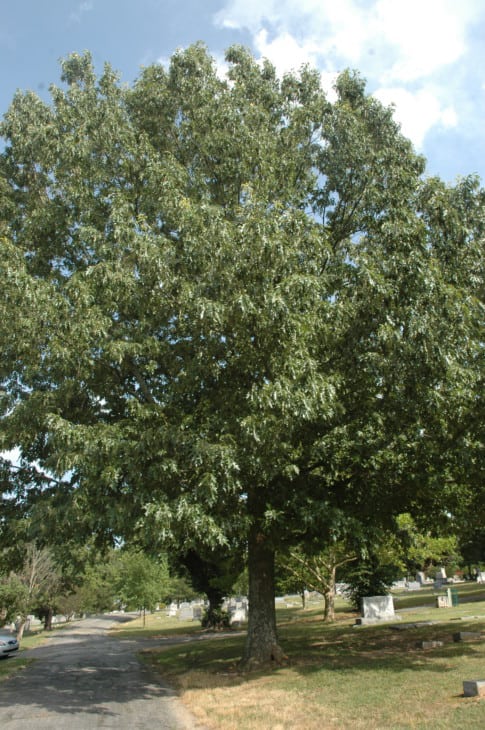
Cherrybark Oak is a 60 to 110 feet tall, deciduous tree with a rounded crown and a long trunk with gray to brownish-gray bark. It features alternate, lobed, pointed, wedge-shaped, dark green leaves with grayish-white, hairy undersides. It produces male and female non-showy blooms that give way to rounded acorns with small, scaly cups. This tree thrives in moist, loamy soils and sunlit areas.
6. Black Oak (Quercus Velutina)
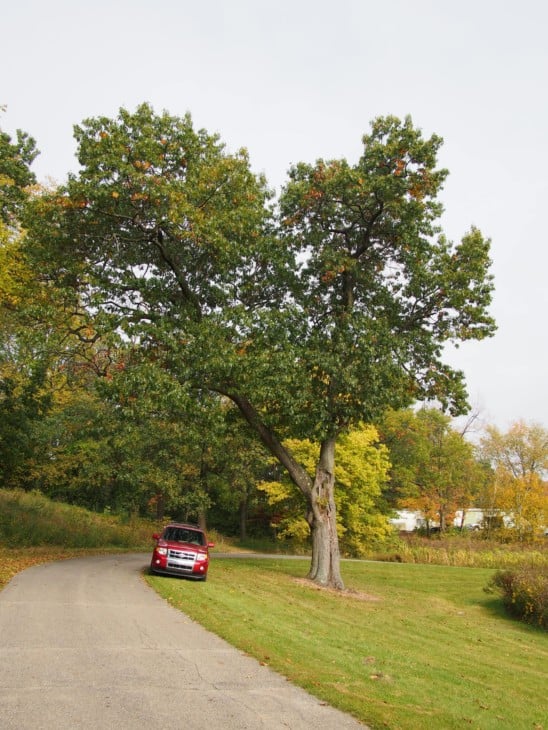
Black Oak is a deciduous tree with a globular, spreading crown decked with leathery, shiny, lobed, bristle-edged, dark green leaves that turn yellow ad yellowish-brown to dull red in autumn. This tree grows up to 50 to 60 feet tall and has a black-hued bark. It yields insignificant blooms and elliptic acorns. This tree thrives in sunlit areas in organically rich, well-drained, moist soils.
7. Shumard Oak (Quercus Shumardii)
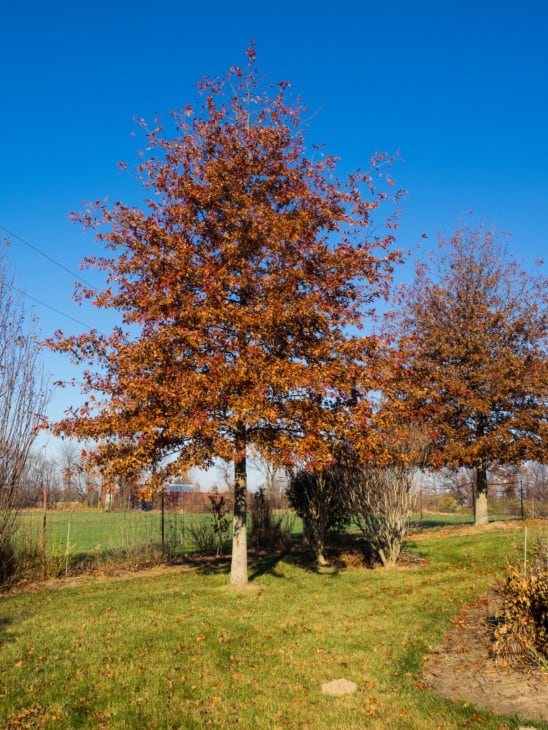
Shumard Oak is a 40 to 60 feet tall, deciduous tree with a broad-open or pyramidal crown decked with shiny, dark green, spiny, lobed leaves that turn brownish-red in fall. It yields insignificant blooms in separate female and male catkins. The flowers give way to globular acorns. Shumard Oak thrives in dry to medium moist, well-drained, acidic soils and full sun.
8. Blackjack Oak (Quercus Marilandcia)
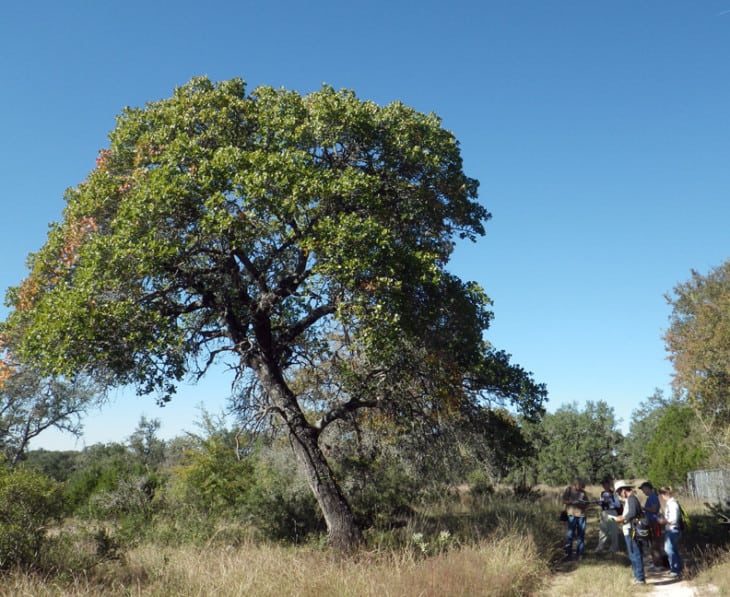
Blackjack Oak is a deciduous, 20 to 40 feet tall tree with an irregular, scruffy crown. It features obovate, leathery, blackjack-type, dark green leaves with bristle-tipped lobes and hairy, rusty-brown undersides. It also produces insignificant blooms that give way to oblong acorns. Blackjack Oak has yellowish-brown fall foliage. It thrives in acidic, well-drained, and dry to medium soils and sun-kissed locations.
9. Water Oak (Quercus Nigra)
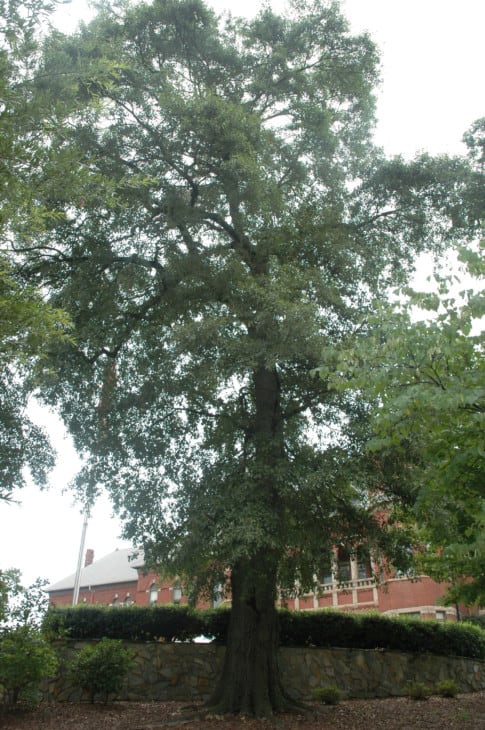
Also known as Possum Oak, Water Oak is a 50 to 80 feet tall, deciduous tree with a broad, rounded crown. It features a rough, scaly, grayish-black bark and narrow, spatula-shaped, smooth-margined, lobed, oblong, and bluish-green leaves with hairy undersides. It also has insignificant blooms that give way to broad-rounded acorns. Water Oak grows well in acidic, humusy, rich, and medium to wet soils and sunlit areas.
10. Scarlet Oak (Quercus Coccinea)
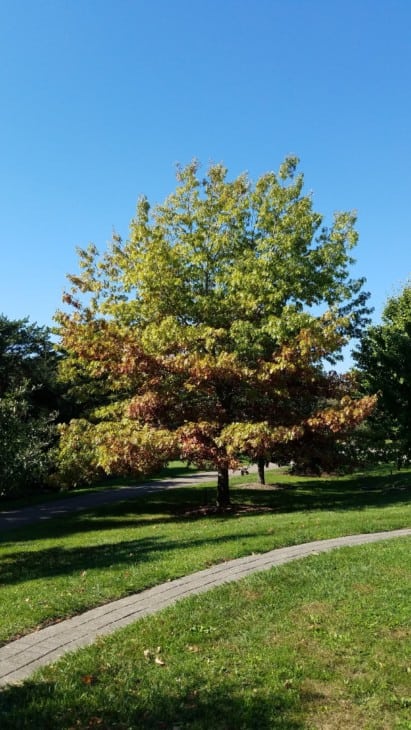
Native to southeastern Missouri, Scarlet Oak is a large, 70 feet tall, deciduous tree with an open, rounded crown. It features large, deeply bristle-tipped, pointy lobed, glossy green leaves that turn scarlet in fall. It also grows monoecious, insignificant blooms. This tree grows well in dry, acidic, well-drained, sandy soils.
11. Bluff Oak (Quercus Austrina)
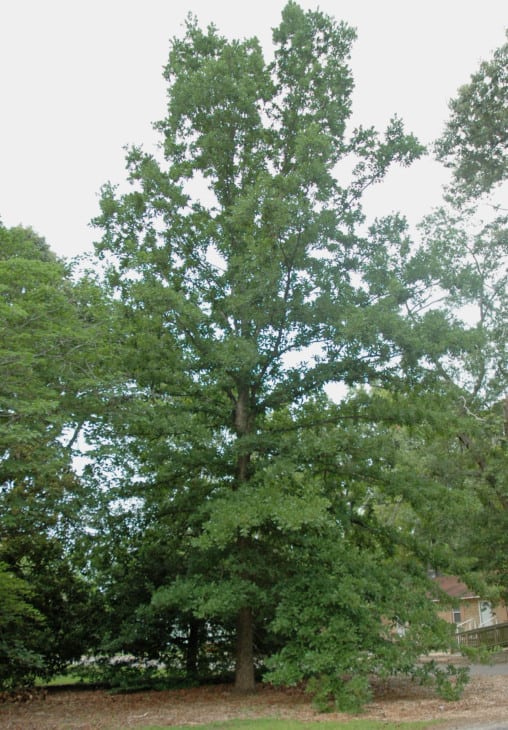
Bluff Oak is a 45 to 60 feet tall, deciduous tree with an open, oval to rounded crown. It features large, showy, simple, alternate, elliptic to obovate, lobed, gray-silver leaves with hairy undersides. The foliage turns orange, copper, and yellow in fall. This tree grows non-showy, yellow spring blooms that give way to rounded acorns. Bluff Oak thrives in full sun and all sorts of moist, free-draining soils.
12. Swamp White Oak (Quercus Bicolor)
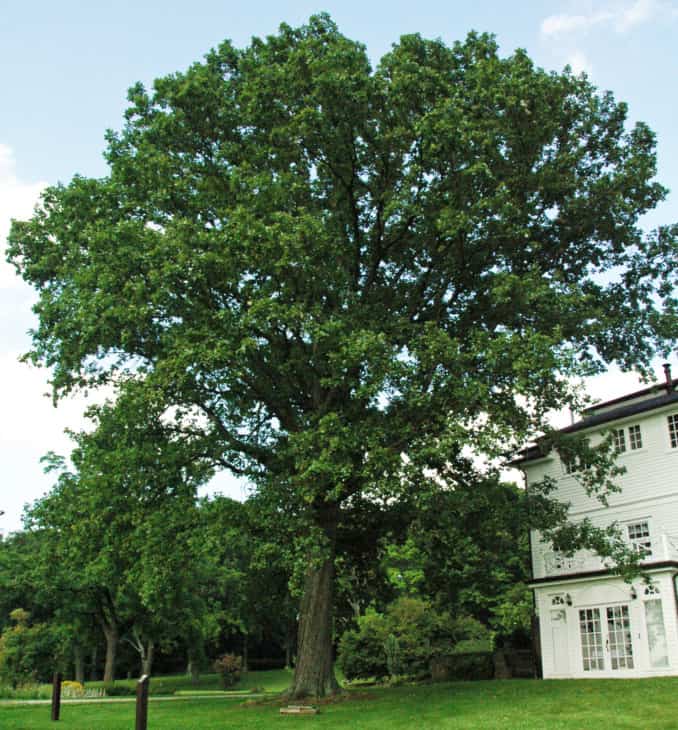
Swamp White Oak is a deciduous, 50 to 60 feet tall tree with a broad, rounded crown and a stout trunk. It has dark green, shiny leaves with silvery-white undersides and blunt edges. The leaves turn yellow and reddish-purple in autumn. This tree features insignificant blooms and acorns. Swamp White Oak is a drought-resistant tree that thrives in wet, acidic, well-drained soils and sunlit areas.
13. Durand Oak (Quercus Durandii)
Durand Oak is a 60 to 90 feet tall, deciduous tree with a wide-spreading, pyramidal to rounded crown. It features alternate, lobed, lanceolate, simple, pinnate, dark green leaves. It also yields non-showy, monoecious blooms that grow in male and female catkins. The flowers give way to rounded acorns. Durand Oak thrives in rich, moist, neutral to acidic, free-draining soils and full sun.
14. Sand Live Oak (Quercus Geminata)
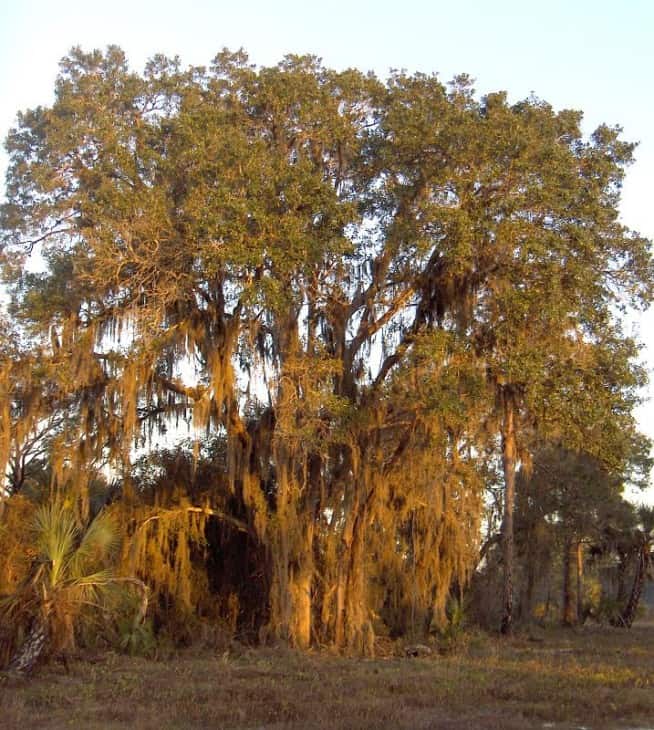
Sand Live Oak is a 50 feet tall, evergreen tree with a wide-spreading, rounded crown. It features thick leathery, simple, alternate, elliptic, dark green leaves with dull gray undersides. It also produces non-showy blooms that give way to egg-shaped acorns with whitish-gray cups. Sand Live Oak thrives in partial shade to full sun and well-drained, moist soils.
15. Laurel Oak (Quercus Laurifolia)
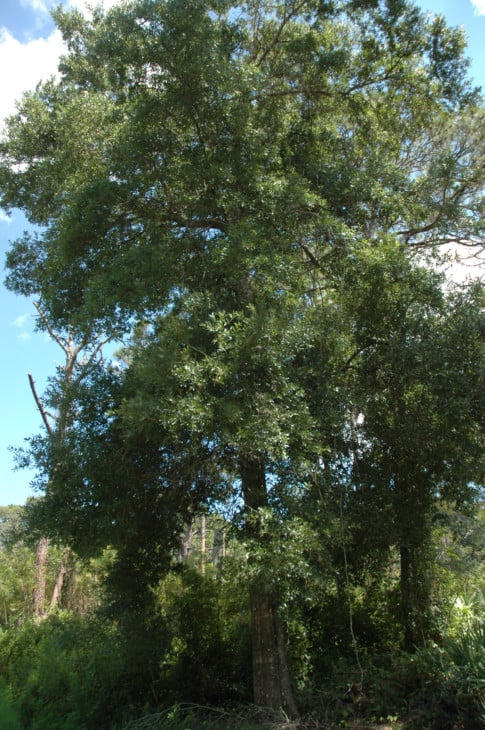
Laurel Oak is a 40 to 60 feet tall, mostly deciduous tree with a broad, rounded crown and scaly, gray trunk. It produces yellowish-green, insignificant blooms that give way to rounded fruits with shallow, scaly cups. It also features glossy, leathery, smooth-margined, oblong, dark green leaves, with pale green undersides. The foliage is semi-evergreen in warm, coastal climates and deciduous further north. Laurel Oak thrives in humusy, acidic, rich, medium to wet, free-draining soils and sunlit areas.
16. Bluejack Oak (Quercus Incana)
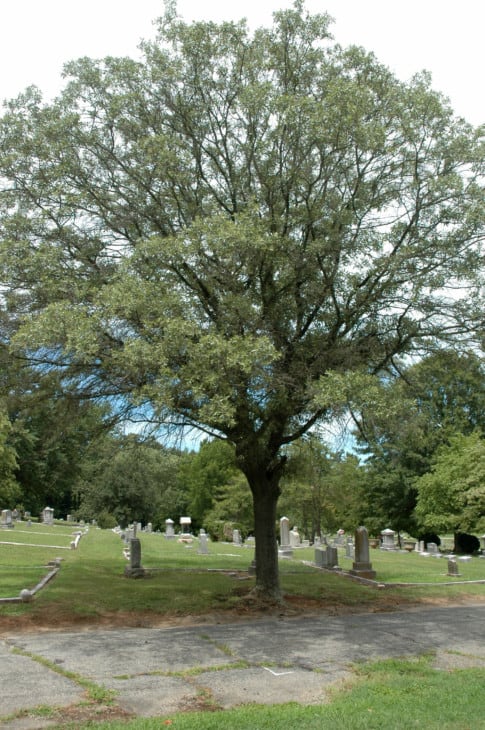
Also known as Cinnamon Oak, Bluejack Oak is a thicket-forming, drought-tolerant, deciduous tree with an open, irregular crown, a short trunk, and crooked branches. It features attractive, blue-green leaves with no fall color. It produces non-showy, greenish-yellow blooms and brownish-copper fall fruits. Bluejack Oak thrives in well-drained loams and sandy soils and full sun to partial shade.
17. Turkey Oak (Quercus Laevis)
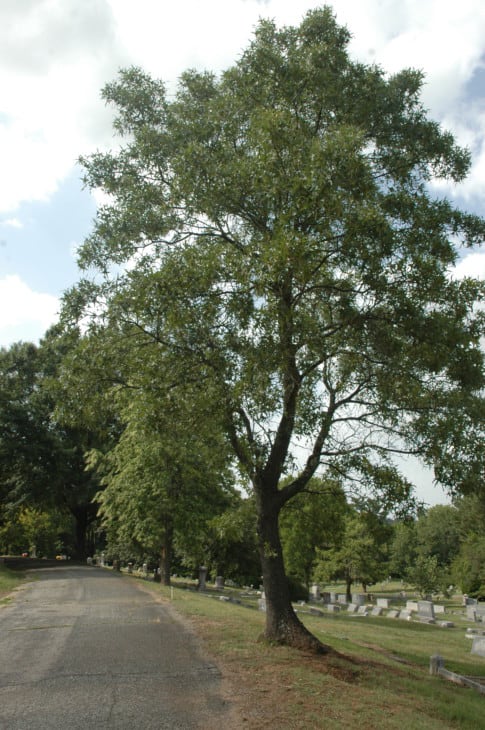
Turkey Oak is a 98 feet tall, deciduous tree with a rounded crown. It features lobed, variable-shaped, rounded, simple, rough-textured, dark green leaves with felted undersides. It grows non-showy blooms in dangling male and female catkins. The flowers give way to large, distinctive acorns with hairy cups. This salt-tolerant tree thrives in full sun to partial shade in a wide variety of free-draining soils.
18. Overcup Oak (Quercus Lyrata)
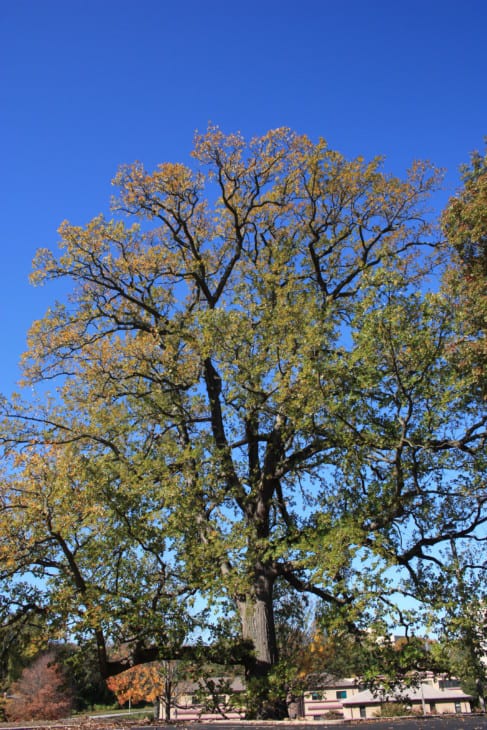
Overcup Oak is a 40 to 60 feet tall, deciduous tree with a straight trunk and broad, rounded habitat. It features insignificant blooms in slender yellow male and reddish, spiked female catkins. The blooms give way to rounded, cupped fruits. This tree features lobed, deep green leaves with fuzzy white undersides. The foliage turns yellow-brown, red, and orange in fall. Overcup Oak thrives in acidic, moist loams and sunlit areas.
19. Sand Post Oak (Quercus Margaretta)
Sand Post Oak is a 30 to 40 feet tall, deciduous, slow-growing tree with an erect trunk and a rounded crown. It is decked with thick, irregularly lobed, rounded, shiny green leaves with light green, hairy undersides. It features non-showy, green flower catkins that give way to distinctive, brown, or copper-hued acorns. This drought-tolerant tree thrives in sandy to gravelly, well-drained soils in full sun.
20. Dwarf Live Oak (Quercus Minima)
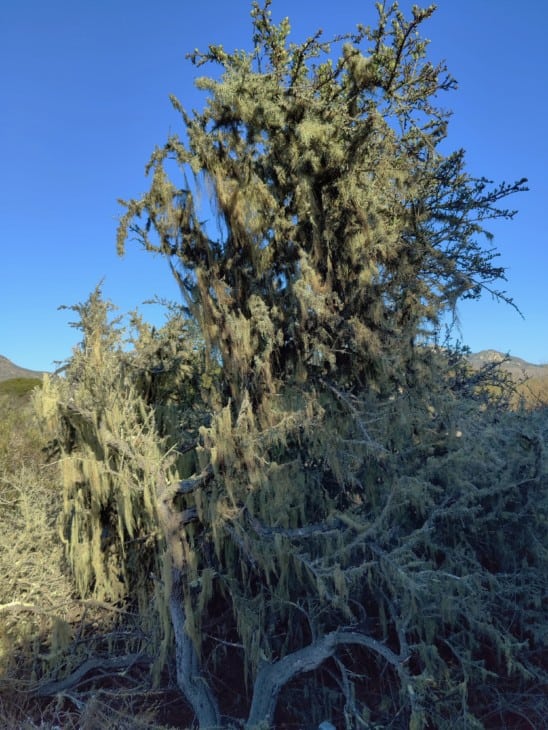
Dwarf Live Oak is a 2 to 3 feet tall, compact, dwarf-sized, semi-evergreen shrub. It features lobed, irregular teethed, alternate, spine-tipped, rounded, green leaves with light green, hairy undersides. It features golden-yellow or green spring blooms that give way to pale brown fall acorns with scaly cups. Dwarf Live Oak thrives in well-drained, sandy soils and sunlit areas.
21. Chinkapin Oak (Quercus Muhlenbergii)
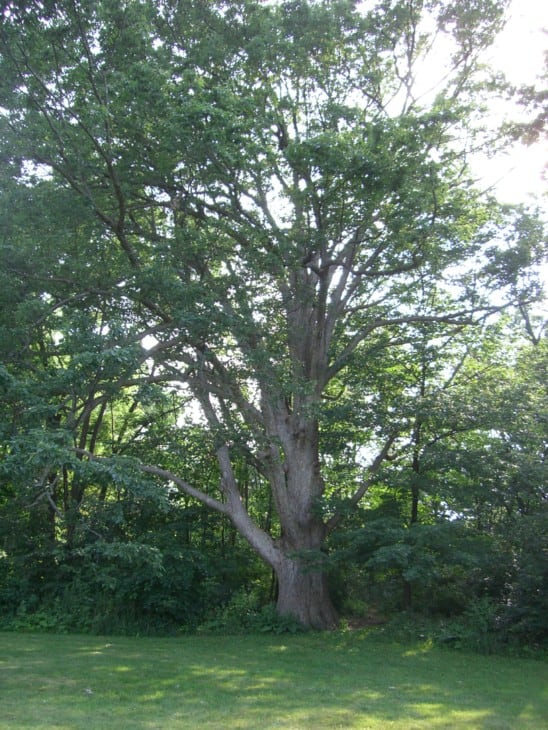
Chinkapin Oak is a deciduous, 40 to 60 feet tall tree with an open, globular crown. It features greenish-yellow, non-showy blooms that give way to oval-shaped acorns with scaly cups. Chinkapin Oak is decked with shiny, narrow, coarse-edged, oblong-lanceolate, green leaves that turn brown and yellow in autumn. This tree thrives in well-drained, moist, fertile loams and sunlit locations.

